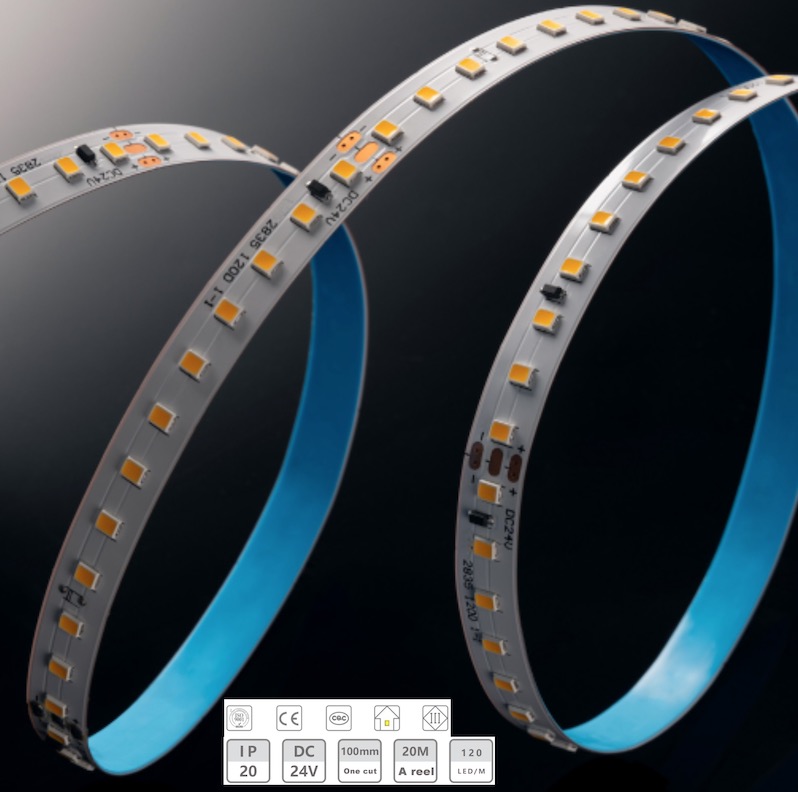What Makes LED Strip Light a Smart Choice for Homes and Businesses?
2025-09-23
The global demand for energy-efficient and versatile lighting solutions has grown rapidly, and LED strip lights are now one of the most popular options for residential, commercial, and architectural applications.
An LED strip light is a flexible circuit board populated with surface-mounted light-emitting diodes (SMD LEDs) that emit illumination when powered. They are typically backed with adhesive for easy installation and can be cut at specific intervals, making them highly customizable for different spaces and applications.
Unlike traditional bulbs, which are limited in design and require specific fixtures, LED strip lights adapt to almost any surface or layout. Their low-profile construction allows them to fit into corners, under cabinets, along ceilings, or even outdoors with weatherproof casings.
The working principle is straightforward: electric current passes through the semiconductor within each diode, releasing photons and producing visible light. By controlling the number of LEDs per meter, color temperature, and wattage, manufacturers can design LED strip lights that deliver varying levels of brightness and ambiance.
To provide clarity on specifications, here is a product parameter table that highlights the most critical technical details of LED strip lights used in professional applications:
| Parameter | Specification Range |
|---|---|
| LED Type | SMD 2835 / SMD 5050 / SMD 5630 |
| Voltage Options | 12V DC, 24V DC |
| Power Consumption | 4.8W – 24W per meter |
| Brightness (Lumen Output) | 400 – 2400 lm per meter |
| Color Temperature | 2700K – 6500K (Warm White to Cool White) |
| RGB/RGBW Options | Single Color, RGB, RGBW (multicolor) |
| Dimmable Functionality | Compatible with PWM dimmers and smart controls |
| IP Rating (Protection) | IP20 (indoor), IP65 / IP67 / IP68 (outdoor use) |
| Lifespan | 30,000 – 50,000 hours |
| Installation Method | 3M adhesive backing, mounting clips, aluminum channels |
This combination of flexibility, efficiency, and durability makes LED strip lights not only functional but also a design element that can enhance the aesthetics of any environment.
Why Are LED Strip Lights Widely Used Across Applications?
When evaluating why LED strip lights are the preferred choice for so many industries, three main reasons stand out: versatility, efficiency, and long-term reliability.
1. Versatility in Design and Application
LED strip lights can be used in numerous settings, including:
-
Residential lighting: Under-cabinet kitchen lights, bedroom ambiance, stair highlights.
-
Commercial spaces: Retail displays, restaurants, hotels, and offices.
-
Architectural projects: Cove lighting, wall accents, and outdoor pathways.
-
Automotive and marine uses: Interior car lighting, boat deck illumination.
Unlike traditional fixtures, strip lights can bend, curve, and be cut to size, making them the go-to choice for projects requiring custom layouts.
2. Energy Efficiency and Cost Savings
LED strip lights consume significantly less power compared to halogen or fluorescent lighting while providing higher lumen output per watt. For businesses running large-scale lighting installations, the reduction in energy bills can be substantial.
3. Longevity and Low Maintenance
With lifespans exceeding 30,000 hours, LED strip lights reduce replacement frequency. Their durability makes them suitable for both high-use indoor environments and challenging outdoor conditions.
4. Safety and Environmental Benefits
Operating at low voltage (12V or 24V DC), LED strip lights are safer to handle and install. They also do not emit harmful UV radiation, contain no mercury, and align with global sustainability practices.
By combining aesthetics with practicality, LED strip lights have become an indispensable tool for lighting designers and everyday users alike.
How Can LED Strip Lights Improve User Experience and Efficiency?
The next question most people ask is how LED strip lights can improve daily living or business performance. The answer lies in the advanced control features, installation flexibility, and adaptability of these systems.
1. Customizable Brightness and Color
LED strip lights can be adjusted to create the desired atmosphere. Warm tones work best for cozy home settings, while cool white enhances workspaces and offices. RGB and RGBW options allow users to select from millions of colors for entertainment spaces, stage setups, or branded environments.
2. Smart Integration and Control
With the integration of Wi-Fi, Bluetooth, or Zigbee systems, LED strip lights can be controlled via smartphones, remote controls, or even voice assistants. Dimming, scheduling, and color-changing modes are accessible in seconds, offering convenience and energy savings.
3. Flexible Installation
Thanks to their adhesive backing and ability to be cut to length, LED strip lights can be installed in areas that traditional fixtures cannot reach. For outdoor use, waterproof models ensure reliability even in rainy or humid environments.
4. Improved Energy Efficiency
When paired with dimmers and motion sensors, LED strip lights contribute to smarter energy consumption. Businesses can significantly reduce operational costs while homeowners can lower monthly utility expenses.
5. Enhanced Aesthetic Value
From highlighting architectural details to creating mood lighting in a living room, strip lights add both functionality and style. This dual benefit explains their growing popularity in interior design projects worldwide.
How to Choose the Right LED Strip Light for Your Needs?
Selecting the best LED strip light requires understanding your environment, desired brightness, and technical requirements. Here are the key considerations:
-
Determine Application: Indoor ambient lighting, outdoor waterproof needs, or decorative use.
-
Select Voltage: 12V for smaller projects, 24V for longer runs with minimal voltage drop.
-
Pick Brightness Level: Check lumens per meter and select according to room size and purpose.
-
Choose Color Temperature: Warm white for living rooms, cool white for work areas, RGB for entertainment zones.
-
Check IP Rating: Higher ratings such as IP65 or IP67 are necessary for outdoor installations.
-
Evaluate Control Options: Decide between basic dimmers or advanced smart controls.
-
Consider Installation Accessories: Aluminum channels, connectors, and power supplies ensure better performance and heat dissipation.
By aligning these factors, users can maximize both the efficiency and lifespan of their LED strip lights.
Frequently Asked Questions
Q1: What is the difference between RGB and RGBW LED strip lights?
RGB strip lights use red, green, and blue diodes to create colors by blending. RGBW adds an additional dedicated white diode, which produces more accurate white tones and enhances overall brightness, making it ideal for professional and decorative applications.
Q2: How long can an LED strip light run without voltage drop issues?
The maximum run depends on the voltage rating and wattage per meter. For 12V strips, runs longer than 5 meters often require parallel connections to prevent dimming. For 24V strips, lengths of up to 10 meters can be achieved more reliably before additional power feeds are needed.
LED strip lights answer the questions of what, why, and how modern lighting should function. They combine the practical benefits of energy savings and longevity with the creative potential of flexible installation and smart integration. Whether used in residential, commercial, or architectural projects, LED strip lights are no longer just accessories—they are central to lighting design strategies worldwide.
For businesses and homeowners seeking premium-quality LED strip lights, Kons provides products designed with precision, durability, and performance in mind. To explore our full range of lighting solutions and discover how we can support your projects, we invite you to contact us today for tailored guidance and reliable supply options.



